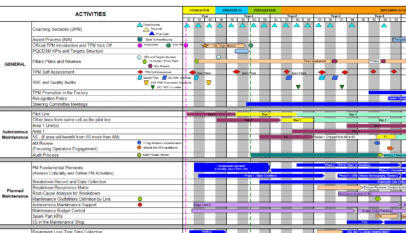A productive and supportive workplace requires transparent processes to effectively address performance and behaviour issues. The Performance Improvement and Corrective Action process provides a structured framework to help employees meet expectations while offering the necessary support. Here’s an in-depth look at how this process works and the tools involved.
The Core Philosophy
The Performance Improvement and Corrective Action process is built on the belief that employees seek success and fulfillment in their roles. The organization’s role is to provide the tools, guidance, and environment necessary for this success. Whether addressing performance gaps or behavioural issues, the overarching goal is to align individual contributions with organizational expectations.
Performance Enhancement Framework
The Performance Enhancement Framework focuses on addressing gaps in job performance. It begins with coaching and counselling to provide employees with an early opportunity to address concerns. Formal steps like Performance Improvement Plans (PIPs) may follow if coaching efforts do not yield the desired improvements.
Key Tools and Processes
- Coaching and Counseling: Initial steps often involve informal discussions to provide guidance and highlight improvement areas. This approach fosters a supportive environment, helping employees recognize and address issues early.
- Verbal Counseling: This step formally communicates the need for improvement and sets clear expectations. A follow-up document or email summarizes the discussion, action items, and deadlines. Ongoing discussions ensure progress is monitored.
- Performance Improvement Plans (PIPs): When more structure is needed, a PIP outlines specific performance gaps, expectations, and timelines. It may include:
- Summary of the performance gap and possible causes.
- Clear performance expectations aligned with role responsibilities.
- Details of support, such as training or one-on-one meetings.
- Defined timelines with progress review milestones.
Managers collaborate with HR to ensure PIPs are fair, actionable, and tailored to the employee’s role.
Corrective Action Program
The Corrective Action Program addresses policy violations, inappropriate conduct, or behaviour issues. The process is designed to be fair and consistent, considering the nature and severity of each case.
Corrective Action Tools and Processes
- Verbal Warning:
- Used for initial or less severe behavioural issues.
- Details the behaviour, expectations, and potential consequences.
- Documented and acknowledged by the employee to ensure clarity and transparency.
- Written Warning:
- Issued if verbal warnings are not adequate or the issue is more serious.
- Includes a comprehensive description of the behaviour, required improvements, and consequences of non-compliance.
- The employee, supervisor and HR representative (where applicable) signed to ensure accountability.
- Final Written Warning:
- Reserved for repeated violations or severe issues.
- Explicitly outlines the risk of further non-compliance leading to termination.
- Requires signatures from all parties to acknowledge understanding and receipt.
Roles and Responsibilities
- Supervisors: Act as the primary point of contact for addressing performance or behavioural issues. They ensure processes are followed, provide guidance, and document each step appropriately.
- Human Resources: Supports managers by providing tools, templates, and advice to ensure fair application of policies.
- Employees: Expected to engage in the process actively, address outlined issues, and meet improvement goals.
Importance of Documentation
Each step of the process must be documented meticulously. This ensures transparency and serves as a record of efforts made to support the employee. Clear documentation provides:
- A reference for future evaluations.
- Evidence of consistent application of policies.
- A tool for tracking progress and outcomes.
Key Takeaways
- The Performance Improvement and Corrective Action process is designed to support employees while maintaining organizational standards.
- Early intervention through coaching and counselling can prevent escalation.
- Clear communication and documentation are critical at every stage.
- Collaboration between managers and HR ensures fair and practical application of the process.
- The ultimate goal is to help employees succeed and align their contributions with organizational goals.













